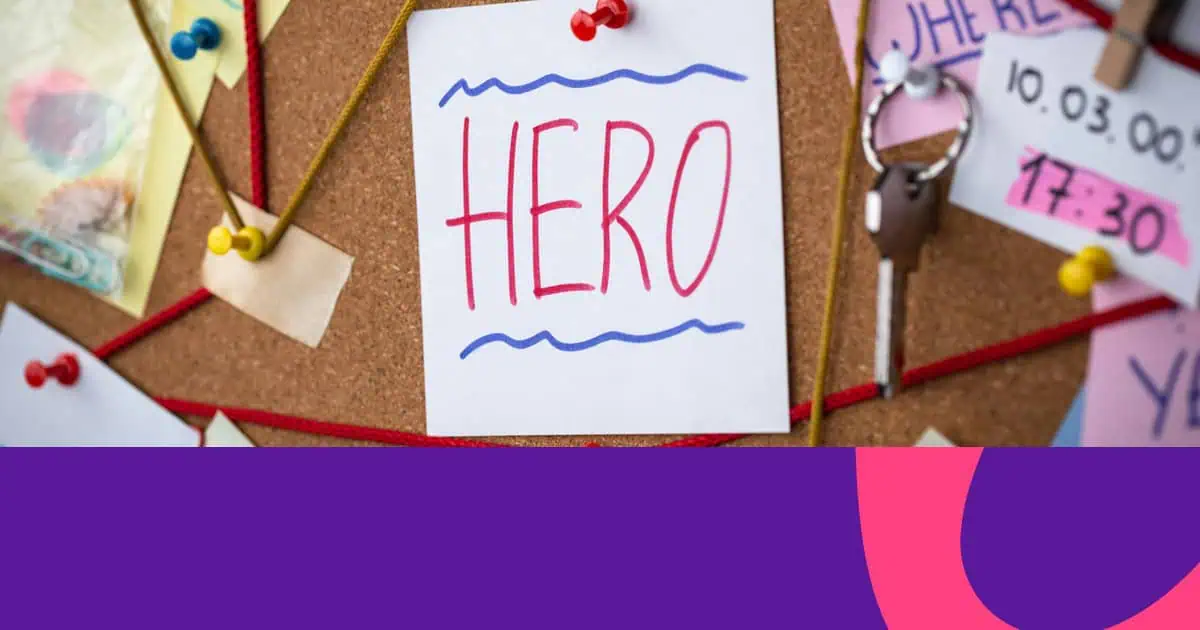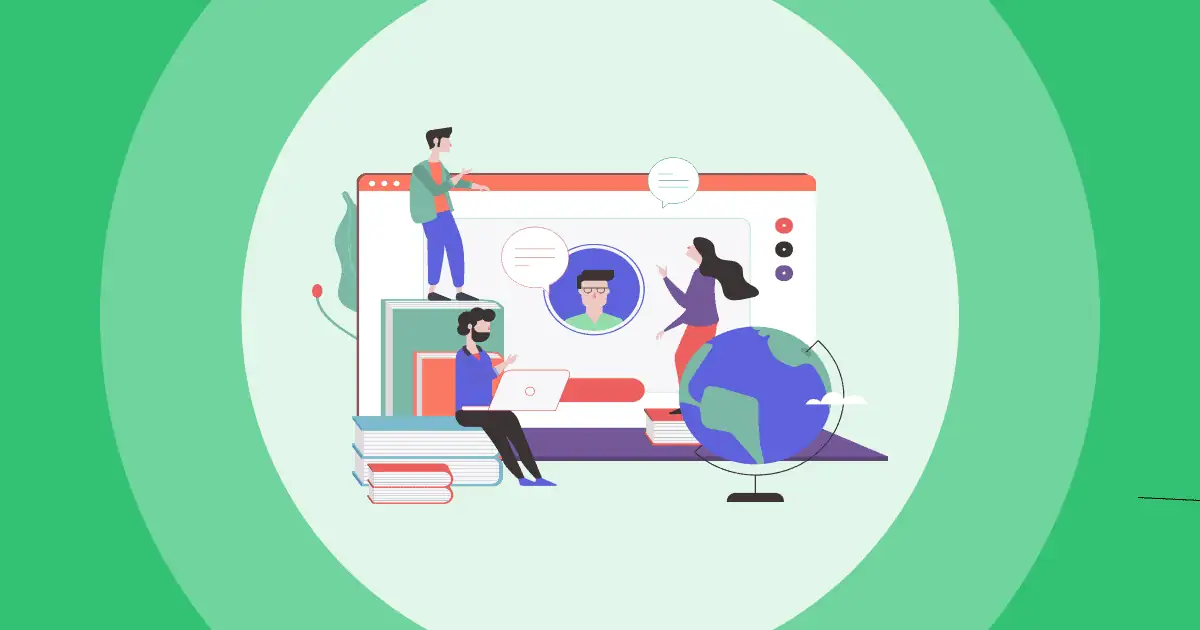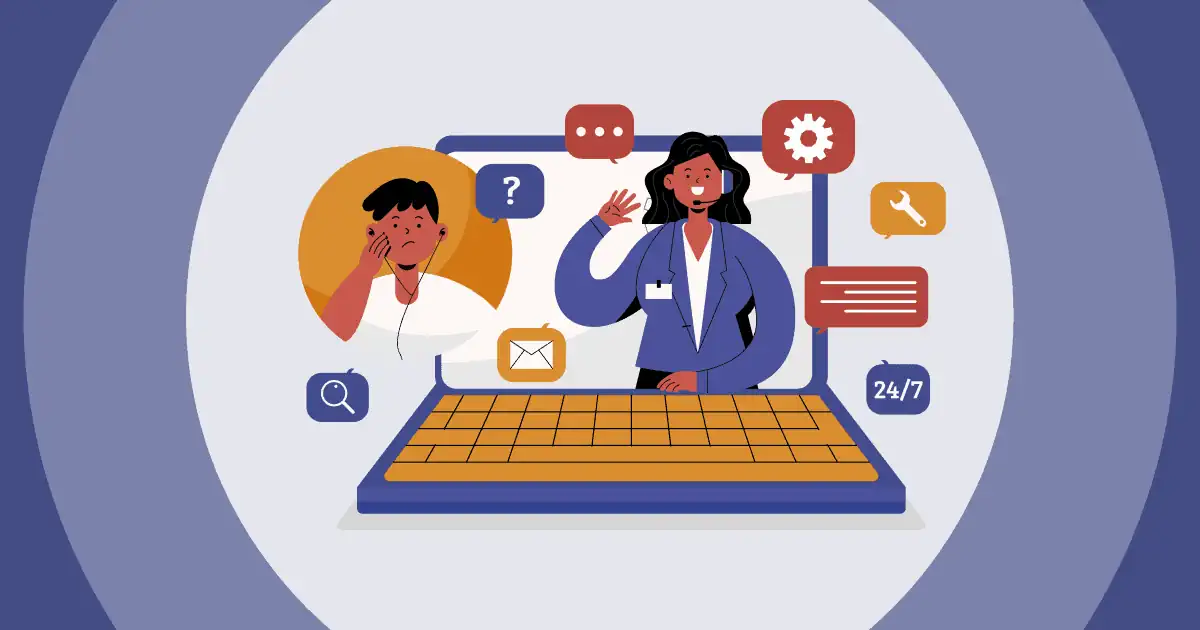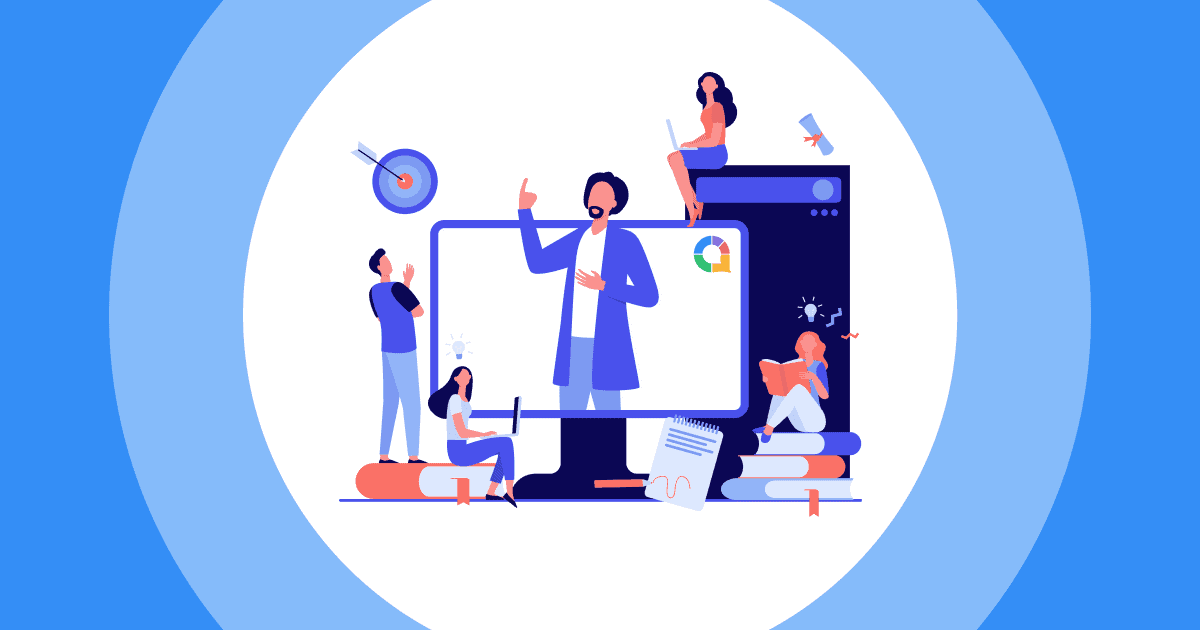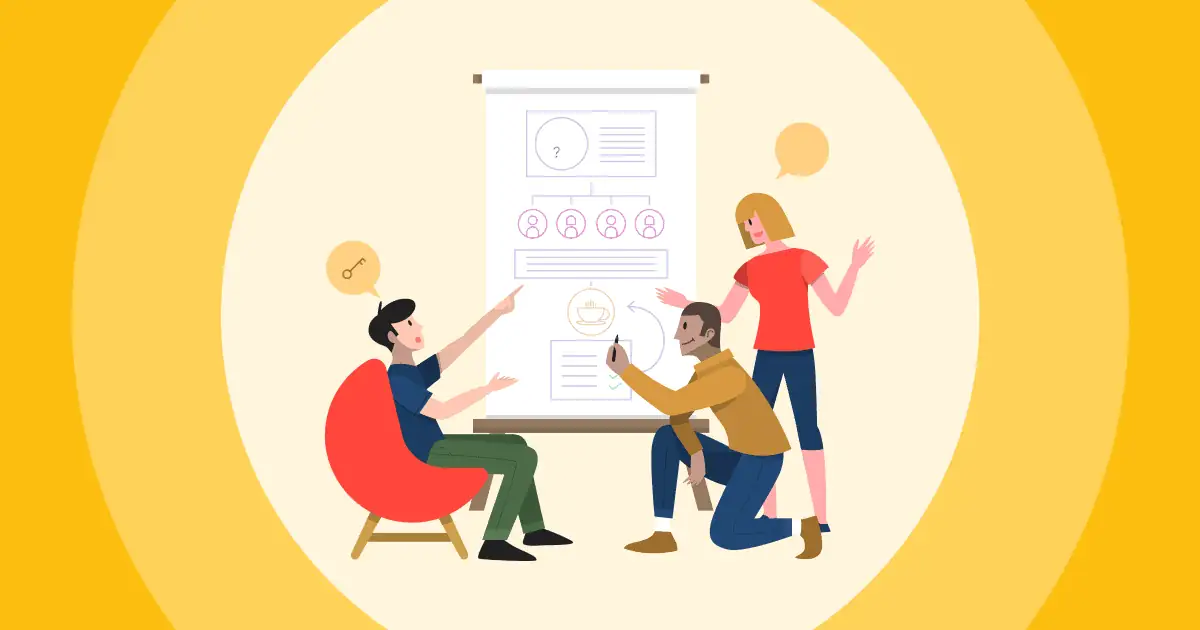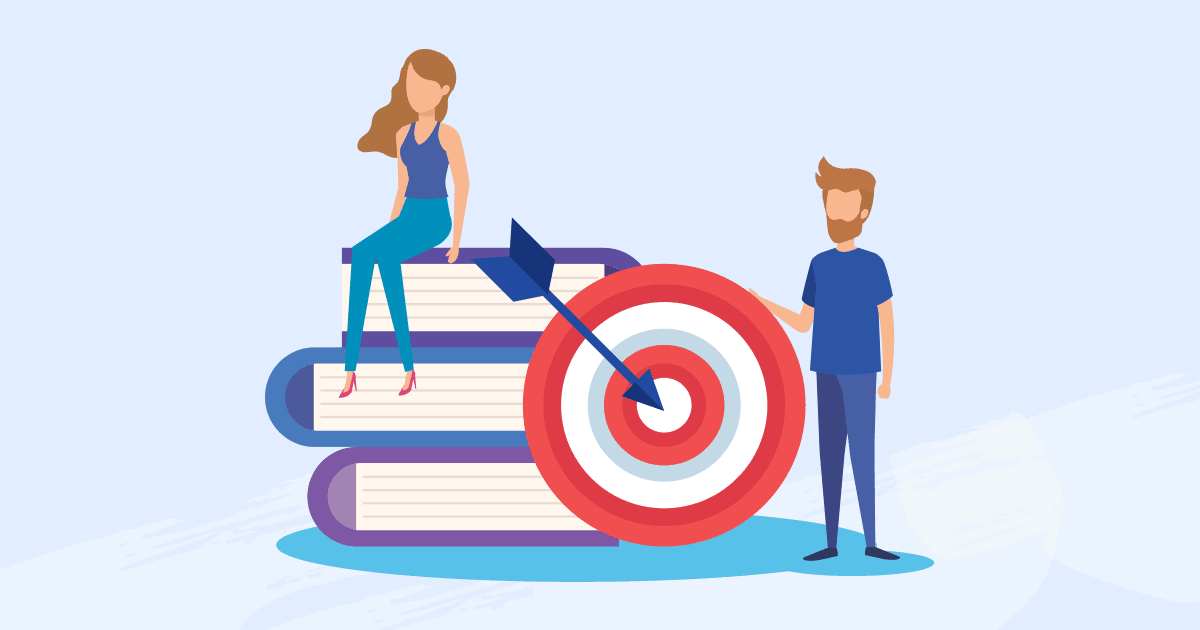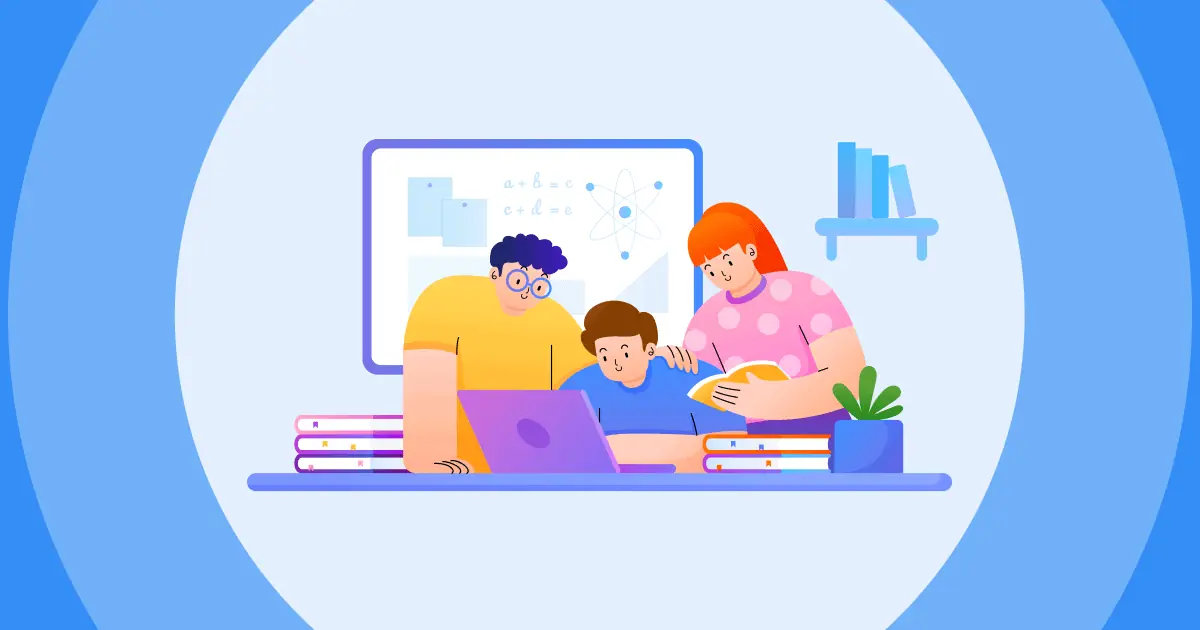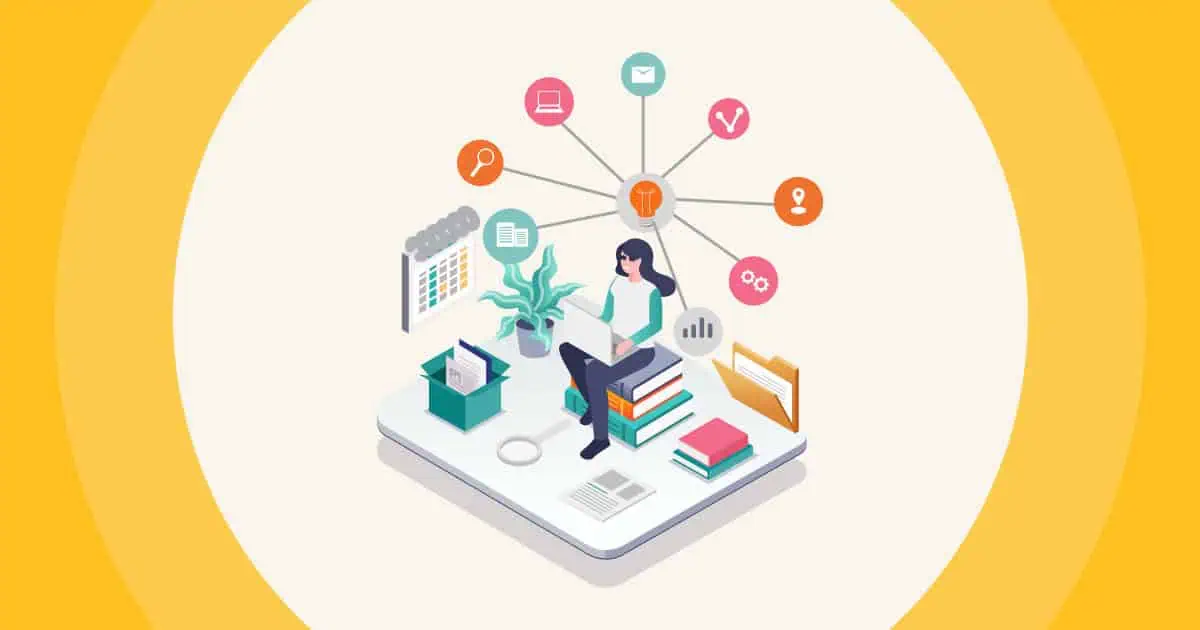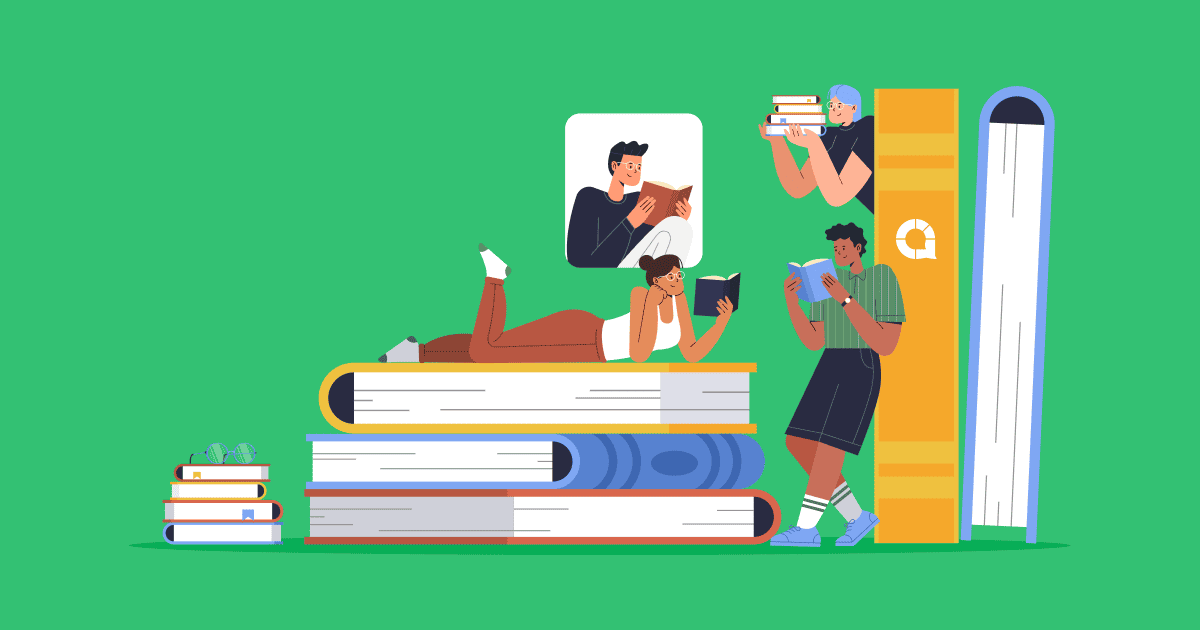Innovatiivsed õpetamismeetodid pole pelgalt uhked moesõnad – need on olulised vahendid klassiruumide loomiseks, kus õpilased tegelikult... tahan õppima. Olenemata sellest, kas õpetate traditsioonilises klassiruumis, veebis või hübriidkeskkonnas, võivad need lähenemisviisid muuta seda, kuidas teie õpilased sisuga suhtlevad ja arendavad oma tulevikuks olulisi oskusi. Uurime neid tehnikaid ja näpunäiteid, kuidas neid oma õpilastega juhendada.
Sisukord
- 15 uuenduslikku õppemeetodit
- 1. Interaktiivsed tunnid
- 2. Virtuaalreaalsuse tehnoloogia kasutamine
- 3. AI kasutamine hariduses
- 4. Segaõpe
- 5. 3D-printimine
- 6. Kasutage disaini-mõtlemise protsessi
- 7. Projektipõhine õpe
- 8. Uurimispõhine õpe
- 9. Pusle
- 10. Uurimuspõhine õpe
- 11. Pööratud klassiruum
- 12. Eakaaslaste õpetamine
- 13. Adaptiivne õpetamine õpianalüütika abil
- 14. Crossover-õpetus
- 15. Personaliseeritud õpe
- Korduma kippuvad küsimused
Mis on uuenduslikud õppemeetodid?
Uuenduslikud õpetamismeetodid ei tähenda ainult kõige tipptasemel tehnoloogia kasutamist klassis või pidevat järele jõudmist uusimatele haridustrendidele.
Nende eesmärk on kasutada uusi õpetamisstrateegiaid, mis keskenduvad rohkem õpilastele. Need innovaatilised julgustavad õpilasi ennetavalt liituma ning oma klassikaaslaste ja teie – õpetajaga – tundide ajal suhtlema. Õpilased peavad rohkem töötama, kuid nii, et see vastaks paremini nende vajadustele ja aitaks neil kiiremini kasvada.
Erinevalt traditsioonilisest õpetamisest, mis keskendub peamiselt sellele, kui palju teadmisi saate oma õpilastele edasi anda, uurivad uuenduslikud õpetamisviisid sügavalt, mida õpilased loengute ajal õpetatavast tegelikult ära võtavad.
Miks peavad õpetajad olema uuenduslikud?
Üleminek veebi- ja hübriidõppele on paljastanud karmi tõe: õpilastel on märkimisväärselt lihtne ekraanide taha tõmbuda. Paljud on lihvinud kunsti näida kaasatud, kui nende mõtted mujal uitavad (või mis veel hullem, kui nad tegelikult voodis on!).
Aga asi on selles – me ei saa kogu süüd õpilastele veeretada. Haridustöötajatena on meil kohustus luua tunde, mis köidavad tähelepanu ja hoiavad kaasatust. Kuiv ja monotoonne õpetamine enam lihtsalt ei sobi, olenemata õppemeetodist.
Numbrid räägivad kaasahaaravat lugu. Hiljutised andmed saidilt haridustehnoloogia kasutuselevõtt näitab:
- 57%-l kõigist USA õpilastest on nüüd oma digitaalsed õppevahendid
- 75% USA koolidest on rakendanud või plaaninud täielikult virtuaalseid võimalusi
- Haridusplatvormid moodustavad 40% õpilaste seadmete kasutusest
- Kaugõppe haldusrakenduste kasutuselevõtt kasvas 87%
- Koostöörakenduste kasutamine hüppas 141%
- 80% haridusasutustest investeeris uutesse tehnoloogilistesse vahenditesse
- 98% ülikoolidest pakkus veebipõhist õpet
See statistika näitab põhimõttelist muutust selles, kuidas me õpetame ja õpime. Ärge jääge maha vananenud meetoditega – on aeg oma hariduslähenemist ümber mõelda.
15 uuenduslikku õppemeetodit
1. Interaktiivsed tunnid
Õpilased on teie uuendusmeelsed õppijad! Ühesuunalised tunnid on väga traditsioonilised ja mõnikord kurnavad nii teile kui ka teie õpilastele, seega looge keskkond, kus õpilased tunnevad julgustust sõna võtma ja oma ideid väljendama.
Õpilased saavad klassisiseste tegevustega liituda mitmel viisil, mitte ainult kätt tõstes või vastama kutsudes. Tänapäeval võite leida veebiplatvorme, mis aitavad teil teha interaktiivseid klassiruumis tegevusi, et säästa aega ja panna kõik õpilased liituma kahe või kolme asemel.
🌟 Interaktiivsete õppetundide näited
Kaasaegsed interaktiivsed platvormid on klassiruumis osalemist revolutsiooniliselt muutnud. Selle asemel, et loota samadele kolmele õpilasele, kes alati käe tõstavad, saate kogu oma klassi kaasata järgmiste platvormide kaudu: reaalajas viktoriinid, küsitlused, sõnapilved, küsimuste ja vastuste voorud ning ühised ajurünnakud.
Mitte ainult seda, vaid õpilased saavad käe tõstmise asemel anonüümselt vastuseid trükkida või valida. See muudab nad enesekindlamaks, et nad osalevad, avaldavad oma arvamust ega pea enam muretsema, et nad eksivad või hinnatakse.
Praktiline näpunäide: Alusta oma järgmist tundi anonüümse küsitlusega, kus küsid õpilastelt, mida nad teema kohta juba teavad. Kasuta tulemusi, et oma õpetust lennult kohandada, käsitledes väärarusaamu ja tuginedes olemasolevatele teadmistele.
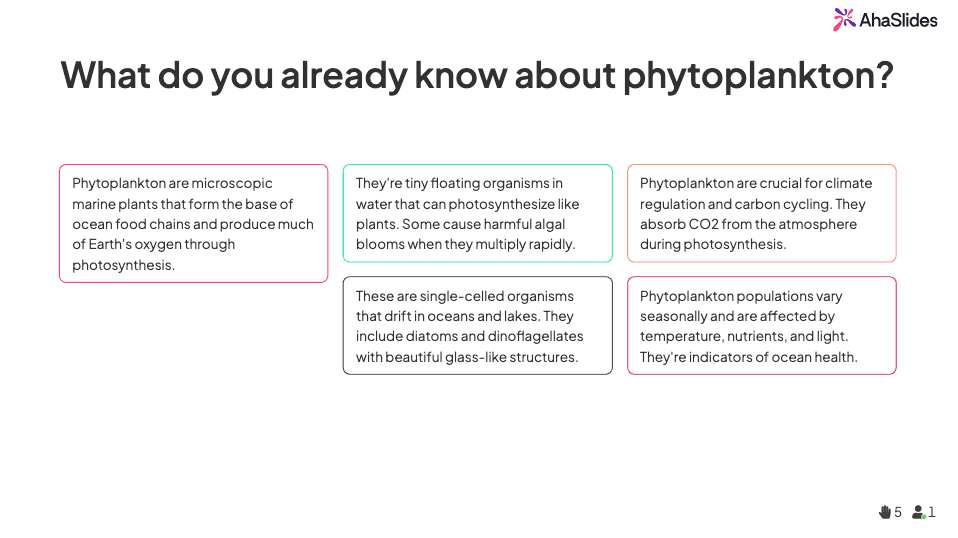
2. Virtuaalreaalsuse tehnoloogia kasutamine
Kujutage ette, kuidas teie õpilased uurivad Marsi pinda, jalutavad läbi Vana-Rooma või kahanevad, et rakke seestpoolt jälgida. See on VR-i jõud hariduses – see muudab abstraktsed mõisted käegakatsutavateks ja meeldejäävateks kogemusteks.
VR-tehnoloogia loob kaasahaaravad õpikeskkonnad, kus õpilased suhtlevad kolmemõõtmeliste kujutistega, mitte õpikute staatiliste piltidega. Nad saavad manipuleerida objektidega, uurida ruume ja kogeda stsenaariume, mis päriselus oleksid võimatud või ebapraktilised.
Jah, VR-seadmed kujutavad endast märkimisväärset investeeringut. Kuid mõju õpilaste kaasatusele ja õpilaste hoidmisele õigustab sageli kulusid. Õpilased mäletavad kogemusi palju paremini kui loenguid ja VR loob unustamatuid õpimomente.
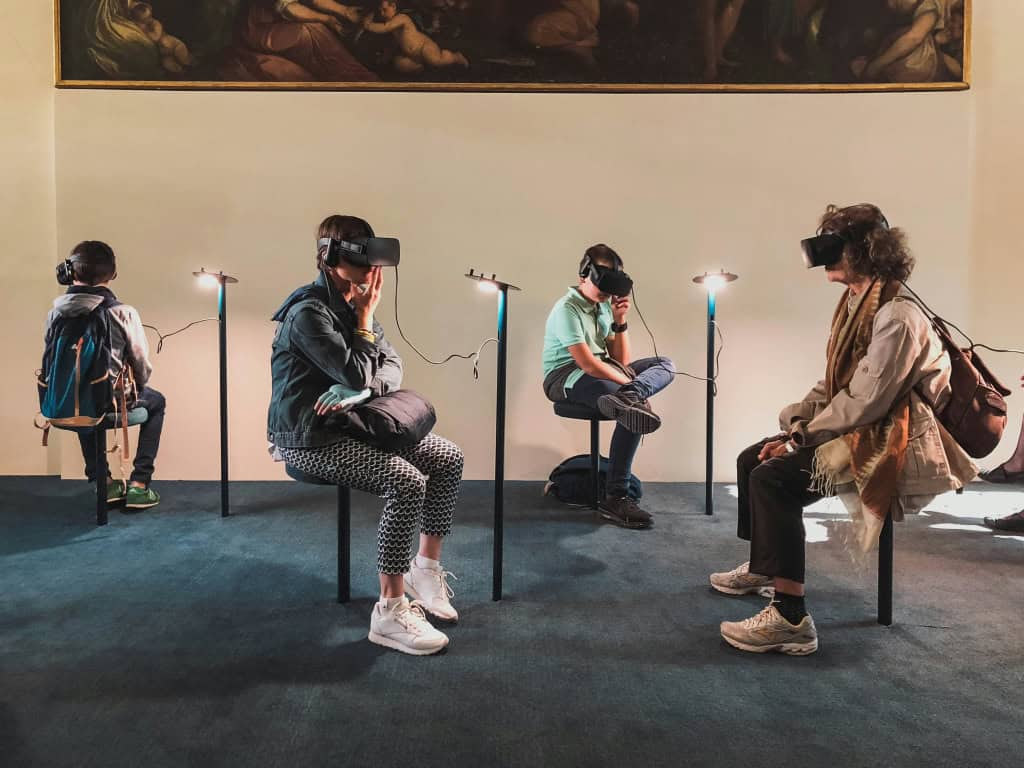
🌟 Virtuaalreaalsuse tehnoloogiaga õpetamine
Tundub lõbus, aga kuidas õpetajad VR-tehnoloogiaga päriselt õpetavad? Vaadake seda videot tahvelarvutiakadeemia VR-seansist.
3. AI kasutamine hariduses
Otsime nüüd ühe olulise asja: tehisintellekt ei ole siin õpetajaid asendamas. Pigem on see võimas tööriist töökoormuse vähendamiseks ja õppe isikupärastamiseks viisil, mis varem lihtsalt võimalik polnud.
Tõenäoliselt kasutate juba tehisintellektil põhinevaid tööriistu, seda ise teadvustamata – õppehaldussüsteemid, plagiaadikontrollijad, automatiseeritud hindamine ja adaptiivsed õppeplatvormid kasutavad kõik tehisintellekti. Need tööriistad täidavad aeganõudvaid haldusülesandeid, vabastades teid keskenduma sellele, mis on tõeliselt oluline: õpilastega ühenduse loomine ja süvaõppe soodustamine.
Tehisintellekt paistab silma mitmetes hariduslikes rakendustes:
- Kursuste juhtimine – Materjalide korrastamine, edusammude jälgimine ja ülesannete haldamine
- Kohanduv õppimine – Raskusastme ja sisu kohandamine vastavalt õpilase individuaalsetele tulemustele
- KOMMUNIKATSIOON – Vanema ja õpetaja vahelise suhtluse ning õpilaste toetamise hõlbustamine
- Sisu loomine – Kohandatud õppematerjalide ja hindamiste loomine
Hoiatus: Kasuta tehisintellekti õpetamisassistendina, mitte inimese otsustusvõime asendajana. Vaata alati üle tehisintellekti loodud sisu ja säilita õpilastega isiklik side – seda ei suuda ükski algoritm korrata.
4. Segaõpe
Segatud õpe ühendab endas parima mõlemast maailmast: näost näkku õpetamise ja digitaalse õppekogemuse. See lähenemisviis pakub paindlikkust nii õpetajatele kui ka õpilastele, säilitades samal ajal isikliku sideme, mis muudab hariduse tähendusrikkaks.
Meie tehnoloogiast küllastunud maailmas oleks võimsate digitaalsete tööriistade ignoreerimine rumal. Videokonverentsid, õpikeskkond, interaktiivsed platvormid ja lugematud haridusrakendused on oma väärtust tõestanud. Kuid sama kehtib ka kontaktõpetuse kohta oma spontaansete arutelude, kohese tagasiside ja inimliku suhtluse kohta.
Segatud õpe võimaldab teil tehnoloogiat kasutada traditsioonilise õpetamise täiustamiseks, mitte asendamiseks. Õpilased võivad kodus vaadata õppevideoid ja seejärel kasutada tundides oldud aega praktiliste tegevuste, arutelude ja koostööprojektide jaoks. Või võite kasutada digitaalseid tööriistu kontaktõppe tundides, et suurendada kaasatust ja koguda reaalajas tagasisidet.
Rakendusidee: Looge "ümberpööratud" üksus, kus õpilased vaatavad kodus (või iseseisva töö ajal) lühikesi videotunde ja seejärel kasutavad tunnisessioone rakendustegevusteks, probleemide lahendamiseks ja eakaaslastega koostööks. See maksimeerib väärtuslikku näost näkku veedetud aega.
5. 3D-printimine
3D-printimine toob abstraktsed kontseptsioonid õpilaste kätte – sõna otseses mõttes. Mudeli füüsilises käes hoidmises ja uurimises on midagi võimast, millele lamedad pildid ja diagrammid lihtsalt vastu ei saa.
Tudengid saavad anatoomiliste mudelite abil mõista kehasüsteeme, uurida arhitektuurilisi struktuure igast küljest, luua ajaloolisi esemeid, kujundada inseneriprototüüpe või visualiseerida matemaatilisi kontseptsioone. Võimalused hõlmavad iga ainevaldkonda.
Lisaks 3D-prinditud objektide vaatlemisele õpetab disainiprotsess ise väärtuslikke oskusi. Kui õpilased loovad oma mudeleid, arendavad nad ruumilist mõtlemist, probleemide lahendamise oskust ja iteratiivset disainmõtlemist.
Eelarvesõbralik lähenemine: Kui teie koolis pole 3D-printerit, pakuvad paljud kohalikud raamatukogud, loomingukeskused ja ülikooli rajatised avalikku juurdepääsu. Veebiteenused saavad samuti soodsalt kujundusi printida ja saata. Enne oma seadmetesse investeerimist alustage tasuta hariduslike mudelite allalaadimisega.
6. Kasutage disaini-mõtlemise protsessi
See on lahenduspõhine strateegia probleemide lahendamiseks, koostööks ja õpilaste loovuse äratamiseks. Seal on viis etappi, kuid see erineb teistest meetoditest, kuna te ei pea järgima samm-sammult juhendit ega järjekorda. See on mittelineaarne protsess, nii et saate seda oma loengute ja tegevuste põhjal kohandada.
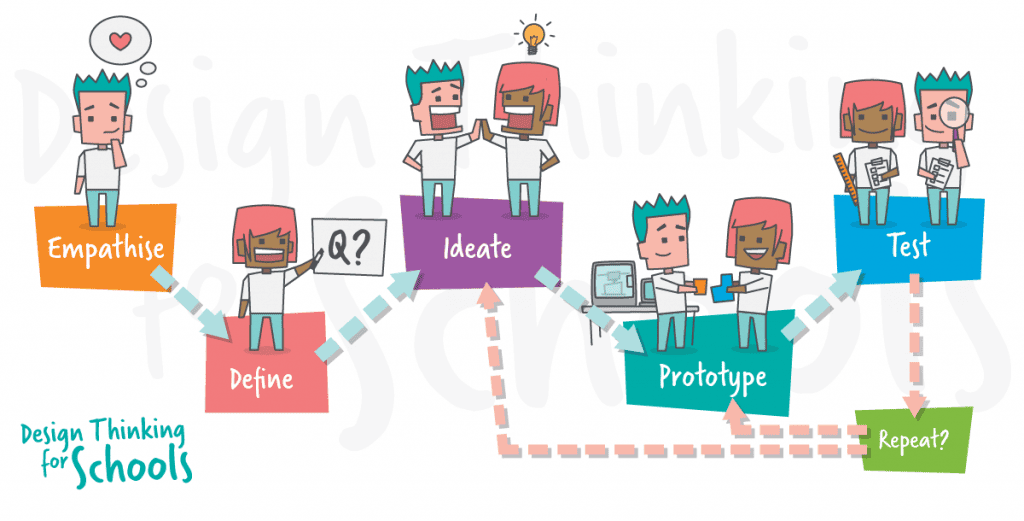
Viis etappi on:
- Tundke kaasa - Arendage empaatiat ja selgitage välja lahenduste vajadused.
- Määratle - Määratlege probleemid ja nende lahendamise potentsiaal.
- Idee - Mõelge ja genereerige uusi loomingulisi ideid.
- Prototüüp - Tehke ideede edasiseks uurimiseks lahendustest mustand või näidis.
- test - Testige lahendusi, hinnake ja koguge tagasisidet.
🌟 Disain-mõtlemise protsessi näide
Kas soovite näha, kuidas pärisklassis läheb? Siit saate teada, kuidas Design 8 ülikoolilinnaku K-39 õpilased selle raamistikuga töötavad.
7. Projektipõhine õpe
Projektipõhine õpe (PBL) pöörab traditsioonilise hariduse pea peale. Selle asemel, et esmalt sisu õppida ja seda alles hiljem rakendada, tegelevad õpilased reaalsete probleemidega, mis nõuavad neilt uue sisu ja oskuste omandamist.
Peamine erinevus tavalistest õppeaine lõpu projektidest: probleemõpetuse projektid on õpikogemus, mitte lihtsalt lõpus lisatav hindamine. Õpilased töötavad pikemate perioodide jooksul, arendades samaaegselt uurimisoskusi, kriitilist mõtlemist, koostööoskusi ja ainealaseid teadmisi.
Sinu roll muutub info edastajast vahendajaks ja juhendajaks. Õpilased võtavad oma õpiteekonna eest vastutuse, mis suurendab oluliselt kaasatust ja meeldejätmist. Nad ei jäta fakte pähe – nad rakendavad teadmisi millegi tähendusrikka loomiseks.
sundimine projekti ideid järgmised:
- Kohaliku sotsiaalse probleemi käsitleva dokumentaalfilmi filmimine
- Kooliürituse või heategevusürituse planeerimine ja läbiviimine
- Kogukonnaorganisatsiooni sotsiaalmeedia kampaania haldamine
- Sotsiaalsete probleemide visuaalsete analüüside loomine koos lahenduste pakkumisega
- Kohalike ettevõtete jätkusuutlikkuse plaanide väljatöötamine
Edu nipp: Veendu, et projektidel oleks lisaks sinule ka autentne publik. Kui õpilased esinevad kogukonnaliikmetele, kohalikele spetsialistidele või noorematele õpilastele, tunduvad panused reaalsed ja motivatsioon tõuseb hüppeliselt.
8. Uurimispõhine õpe
Uurimuspõhine õpe algab küsimuste, mitte vastustega. Loengu pidamise ja seejärel arusaamise hindamise asemel püstitate probleeme või stsenaariume, mida õpilased peavad iseseisvalt või koostöös uurima.
See meetod positsioneerib sind pigem juhendaja kui õppejõu rollis. Õpilased arendavad uurimisoskusi, kriitilist mõtlemist ja iseseisva õppimise võimeid, otsides vastuseid kaasahaaravatele küsimustele.
Protsess hõlmab tavaliselt õpilasi:
- Probleemi või küsimusega kokkupuutumine
- Hüpoteeside või ennustuste sõnastamine
- Uurimuste või uurimismeetodite kavandamine
- Teabe kogumine ja analüüsimine
- Järelduste tegemine ja leidude üle järelemõtlemine
- Tulemuste edastamine teistele
Päringupõhised stsenaariumid võivad hõlmata järgmist:
- Saasteallikate uurimine teie kogukonnas ja lahenduste pakkumine
- Taimede kasvatamise katsetamine erinevates tingimustes
- Olemasolevate koolipoliitikate tõhususe hindamine
- Uurimisküsimused, mis õpilastel endil huvipakkuvate teemade kohta tekivad
Tellingute nipp: Alusta struktureeritud uurimusega, kus esitad küsimuse ja meetodi, seejärel vabasta vastutus järk-järgult, kuni õpilased ise küsimusi genereerivad ja iseseisvalt uurimistöid kavandavad.
9. Pusle
Nagu pusle kokkupanek, paneb see koostööl põhinev õppestrateegia õpilased oma ühised teadmised kokku panema, et moodustada teemast terviklik pilt.
See toimib järgmiselt:
- Jaga oma klass väikesteks gruppideks
- Määrake igale rühmale põhiteema erinev alateema või aspekt
- Laske rühmadel uurida ja saada neile määratud töö "ekspertideks".
- Iga rühm esitleb oma leide klassile
- Kokkuvõttes moodustavad ettekanded tervikliku arusaama kogu teemast.
- Soovi korral korraldage vastastikuse tagasiside sessioone, kus rühmad hindavad üksteise tööd.
Kogenumate tundide puhul võite igale õpilasele määrata erinevad alateemad. Esmalt kohtuvad nad sama alateemat õppivate klassikaaslastega (ekspertgrupid) ja seejärel naasevad oma algsete gruppide juurde, et õpetada õpitut.
Teemapõhised näited:
- Keelekunst: Määrake rühmadele samast romaanist erinevad kirjanduslikud elemendid (tegelaskujud, miljöö, teemad, sümboolika)
- Ajalugu: Laske rühmadel uurida ajaloolise sündmuse erinevaid aspekte (põhjused, võtmeisikud, suuremad lahingud, tagajärjed, pärand)
- Teadus: Õpilased uurivad erinevaid kehasüsteeme ja õpetavad seejärel klassikaaslastele, kuidas need omavahel seotud on.
Miks see töötab: Sisu õpetamine eakaaslastele nõuab sügavamat mõistmist kui lihtsalt selle õppimist. Õpilased peavad oma sisust tõeliselt aru saama, et seda selgelt selgitada, ning nad vastutavad oma klassikaaslaste, mitte ainult sinu ees.
10. Uurimuspõhine õpe
Uurimuspõhine õpe seab hariduse keskmesse uudishimu. Õpetajate asemel, kes annavad kõik vastused, juhivad õpilased oma õppimist, esitades küsimusi, uurides teemasid ja luues teadmisi uurimise ja avastamise kaudu.
See lähenemisviis muudab õpilased passiivsetest vastuvõtjatest aktiivseteks uurijateks. Õpetajad tegutsevad pigem uurimisprotsessi suunajatena kui info väravavahtidena. Õpilased arendavad kriitilist mõtlemist, uurimisoskusi ja sügavamat arusaamist, sest nad on isiklikult pühendunud vastuste leidmisele neile olulistele küsimustele.
Uurimustsükkel läbib tavaliselt etappe: õpilased esitavad küsimusi, planeerivad uurimisi, koguvad ja analüüsivad teavet, teevad järeldusi ning mõtisklevad õpitu üle. See peegeldab seda, kuidas päris teadlased, ajaloolased ja spetsialistid selles valdkonnas töötavad.
Uurimuspõhise õppe eriti võimsaks teeb see, et see õpetab õpilasi kuidas õppida, mitte ainult mida õppima. Nad arendavad probleemide lahendamise oskusi ja vastupidavust raskustega silmitsi seistes, mis valmistab neid ette elukestvaks õppeks.
🌟 Uurimuspõhise õppe näited
- Teaduslik uurimineSelle asemel, et õpilastele öelda, kuidas taimed kasvavad, küsige: "Mida taimed ellujäämiseks vajavad?" Laske õpilastel kavandada katseid, testides erinevaid muutujaid, nagu valgus, vesi ja mulla kvaliteet.
- Ajalooline uurimineAjaloolise sündmuse loengu pidamise asemel esitage küsimus, näiteks "Miks Berliini müür langes?". Õpilased uurivad oma arusaamise suurendamiseks mitmeid vaatenurki, algallikaid ja ajaloolisi kontekste.
- Matemaatika uurimineEsitage reaalse maailma probleem: "Kuidas saaksime oma kooli mänguväljakut ümber kujundada, et mängualasid eelarve piires maksimeerida?" Õpilased rakendavad matemaatilisi mõisteid, uurides samal ajal praktilisi lahendusi.
11. Pööratud klassiruum
. ümberpööratud klassiruumi mudel pöörab traditsioonilise õppetöö pea peale: sisu edastamine toimub kodus, samas kui rakendamine ja harjutamine toimub tunnis.
Enne tundi vaatavad õpilased videoid, loevad materjale või uurivad ressursse, et omandada põhiteadmisi. Seejärel pühendatakse väärtuslik tunniaeg tegevustele, mida traditsiooniliselt peeti kodutööks – kontseptsioonide rakendamisele, probleemide lahendamisele, ideede arutamisele ja projektide kallal koostööle.
Sellel lähenemisviisil on mitu eelist. Õpilased saavad õppematerjali vastavalt vajadusele peatada, tagasi kerida ja uuesti vaadata, õppides omas tempos. Raskustega õpilased saavad põhimaterjaliga lisaaega, samas kui edasijõudnud õpilased saavad põhitõed kiiresti selgeks õppida ja süveneda laiendustesse.
Samal ajal oled tunnis saadaval hetkedel, mil õpilased sind kõige rohkem vajavad – kui nad maadlevad keeruliste taotlustega, mitte ei kuula passiivselt selgitusi.
Rakendusstrateegia: Loo lühikesi ja fokuseeritud videotunde (maksimaalselt 5–10 minutit). Õpilastel on salvestatud sisu puhul lühike tähelepanuvõime, seega hoia see kokkuvõtliku ja kaasahaaravana. Kasuta tunniaega praktiliste tegevuste, arutelude ja koostööl põhineva probleemide lahendamise jaoks, kus sinu asjatundlikkus lisab reaalset väärtust.
Tahad teada, kuidas ümberpööratud klassiruum välja näeb ja toimub reaalses elusVaadake seda McGraw-Hilli videot nende ümberpööratud klassist.
12. Eakaaslaste õpetamine
See on sarnane pusletehnikas käsitletule. Õpilased mõistavad ja omandavad teadmisi paremini, kui nad suudavad neid selgelt selgitada. Esitledes võivad nad enne pähe õppida ja rääkida kõva häälega, mida mäletavad, kuid kaaslaste õpetamiseks peavad nad probleemist põhjalikult aru saama.
Õpilased saavad selles tegevuses juhtrolli võtta, valides aine raames endale huviala. Õpilastele sellise autonoomia andmine aitab neil arendada aine omanditunnet ja vastutust seda õigesti õpetada.
Samuti leiate, et õpilastele võimaluse andmine klassikaaslasi õpetada suurendab nende enesekindlust, julgustab iseseisvat õppimist ja parandab esinemisoskust.
🌟 Näited kolleegide õpetamisest
Vaadake seda videot loomulikust ja dünaamilisest matemaatikatunnist, mille õpetas Dulwichi visuaalkunstide ja disaini keskkooli noor õpilane!
13. Adaptiivne õpetamine õpianalüütika abil
Adaptiivne õpetamine kasutab andmeid ja tehnoloogiat, et iga õpilase õpetust reaalajas isikupärastada. Õpianalüütika tööriistad koguvad teavet õpilaste soorituse, kaasatuse ja õppimismustrite kohta ning aitavad õpetajatel seejärel oma õpetamisstrateegiaid individuaalsete vajaduste rahuldamiseks kohandada.
See meetod läheb kaugemale traditsioonilisest universaalsest õpetamisest, tunnistades, et iga õpilane õpib erinevalt ja omas tempos. Õpetajad saavad kasutada juhtpaneele ja aruandeid, et teha kindlaks, millised õpilased vajavad lisatuge, millised on valmis keerukama materjali jaoks ja milliste mõistetega kogu klass raskusi tunneb.
Õpianalüütika platvormid jälgivad kõike alates testide tulemustest ja ülesannete täitmisest kuni ülesannetele kulutatud aja ja suhtlusmustriteni. Need andmed annavad õpetajatele praktilisi teadmisi, ilma et nad peaksid lootma ainult kõhutundele või perioodilistele testidele.
🌟 Adaptiivne õpetamine õpianalüütika näidetega
Õppehaldussüsteemi (LMS) andmedPlatvormid nagu Google Classroom Canvasvõi Moodle'is jälgitakse õpilaste kaasatuse näitajaid – millal õpilased materjalidele ligi pääsevad, kui kaua nad lugemisele kulutavad, milliseid ressursse nad uuesti vaatavad. Õpetajad saavad pöörduda õpilaste poole, kellel esineb kaasatuse mustreid, enne kui nad maha jäävad.
Adaptiivsed õppeplatvormidKasutage selliseid tööriistu nagu Khan Academy või IXL, mis kohandavad küsimuste raskusastet automaatselt õpilaste vastuste põhjal. Õpetajad saavad üksikasjalikke aruandeid, mis näitavad, milliseid mõisteid iga õpilane on omandanud ja kus tal raskusi on.
Reaalajas kujundav hindamineTundide ajal kasutage kiirete arusaamise kontrollide tegemiseks selliseid platvorme nagu AhaSlides või KahootAnalüütika näitab koheselt, millised õpilased vastasid küsimustele õigesti või valesti, võimaldades teil kontseptsioone kohapeal ümber õpetada või moodustada väikeseid sihtrühmi.
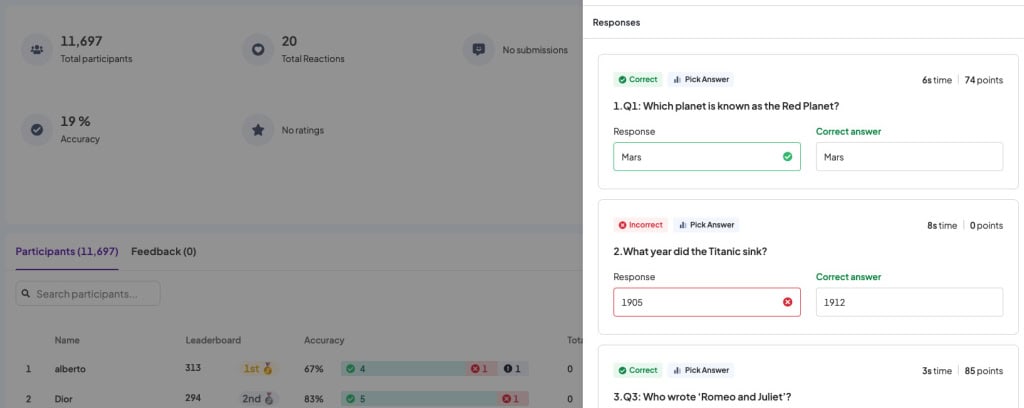
14. Crossover-õpetus
Kas mäletate, kui elevil olite, kui teie klass läks muuseumile, näitusele või väljasõidule? Väljas käimine ja midagi muud kui klassiruumis tahvli vaatamine on alati tore.
Crossover-õpetus ühendab endas õppimise kogemuse nii klassiruumis kui ka väljaspool. Uurige koos koolis kontseptsioone, seejärel korraldage külastus konkreetsesse kohta, kus saate näidata, kuidas see kontseptsioon tegelikus keskkonnas töötab.
Veelgi tõhusam oleks tundi edasi arendada, korraldades pärast väljasõitu klassis arutelusid või rühmatöid.
🌟 Virtuaalse crossoveri õpetamise näide
Mõnikord pole õues käimine alati võimalik, kuid selleks on võimalusi. Tutvuge virtuaalse moodsa kunsti muuseumi ekskursiooniga proua Gauthieriga Southfield School Artist.
15. Personaliseeritud õpe
Siin on ebamugav tõde: see, mis mõne õpilase jaoks suurepäraselt toimib, kukub teiste jaoks täielikult läbi. Grupitegevused annavad ekstraverte energiat, kuid uputavad introverte üle. Visuaalsed õppijad õitsevad diagrammide abil, samas kui verbaalsed õppijad eelistavad arutelu. Kiire tempoga tunnid haaravad mõned kaasa, samas kui teised jätavad maha.
Personaliseeritud õpe tunnistab neid erinevusi ja kohandab õpetust vastavalt iga õpilase huvidele, vajadustele, tugevustele ja nõrkustele. Jah, see nõuab rohkem planeerimisaega. Kuid õpilaste saavutuste ja kaasatuse näol on see märkimisväärne tasuvus.
Isikupärastamine ei tähenda iga õpilase jaoks täiesti erinevate tundide loomist. Pigem tähendab see valikuvõimaluste pakkumist, paindlikku õppetempot, mitmekesiseid hindamismeetodeid ja diferentseeritud tuge.
Digitaalsed tööriistad muudavad isikupärastamise lihtsamaks kui kunagi varem. Adaptiivsed õppeplatvormid kohandavad raskusastet automaatselt, õpihaldussüsteemid jälgivad individuaalset edu ja mitmesugused rakendused võimaldavad õpilastel mitmel viisil arusaamist näidata.
Alusta väikselt: Alustage valiktahvlitega, kus õpilased saavad ülesannete või projektide jaoks valida mitme variandi hulgast. Või kasutage formatiivse hindamise andmeid paindlike rühmituste loomiseks – mõnikord töötades raskustes õpilastega, samal ajal kui teised tegelevad lisategevusega, teinekord rühmitades huvide, mitte võimete järgi. Lisage järk-järgult rohkem isikupärastamist, kui olete harjunud.
Korduma kippuvad küsimused
Kuidas valida, millist uuenduslikku meetodit kõigepealt proovida?
Alusta sellest, mis sobib kõige paremini sinu õpetamisstiili ja olemasolevate ressurssidega. Kui tunned end tehnoloogiaga mugavalt, proovi esmalt interaktiivseid tunde või ümberpööratud klassiruumi. Kui eelistad praktilist õppimist, katseta projektipõhist õpet või pusletehnikat. Ära tunne survet kõike korraga omaks võtta – isegi üks uus meetod võib õpilaste kaasatust oluliselt mõjutada.
Mis siis, kui mu õpilased nendele uutele meetoditele vastu seisavad?
Muutused võivad olla ebamugavad, eriti õpilastele, kes on harjunud passiivse õppimisega. Alusta järk-järgult, selgita, miks sa uusi lähenemisviise proovid, ja ole kannatlik, kuni õpilased kohanevad. Paljud õpilased eelistavad algselt traditsioonilisi meetodeid lihtsalt seetõttu, et need on tuttavad, mitte seetõttu, et need on tõhusamad. Kui õpilased kogevad uuenduslike lähenemisviisidega edu, siis vastuseis tavaliselt kaob.
Kas need meetodid ei võta tunnis liiga palju aega?
Alguses küll – uute meetodite rakendamine nõuab kohanemisaega. Kuid pidage meeles, et õpetamine ei seisne sisu läbivõtmises; see seisneb õpilaste sisu õppimises. Uuenduslikud meetodid viivad sageli sügavama ja kestvama arusaamiseni kui traditsioonilised loengud, isegi kui käsitlete vähem materjali. Kvaliteet on olulisem kui kvantiteet. Lisaks muutuvad need lähenemisviisid teie ja õpilaste harjudes tõhusamaks.
